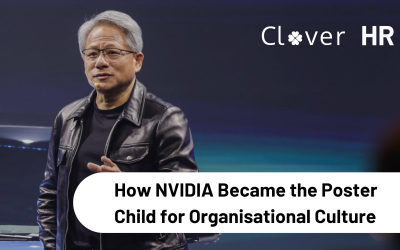Many facets make up our usual working environment from the overflowing car park, polished corridor floors to the worn office chairs and everything in between. Overnight, our pressed suits and daily commutes were replaced with ‘respectable’ pyjama combinations and a stroll from the bedroom to the dining room desk, but at least the coffee is free! The impact of COVID has been far-reaching, from our physical locations, the way we communicate, our reliance on technology and even how we manage our people, so where do we go from here?
COVID-19 has flipped our focus from open-plan offices, hot desking neighbourhoods and collaboration stations to isolated home working. Not all of us are lucky enough to have a designated office and the few that are, a losing hand of rock, paper, scissors could see you seated at the dining table, on the sofa, laptop precariously balanced on your knees or hiding from home school truants in the bathroom. It is not only our physical environment that has changed, with no sardine packed trains or bumper to bumper traffic, many have been able to capitalise on a new morning routine – for some, an extra hours sleep, or an extra hour to fine tune that presentation; others have taken to exercising, spending time with family or finally getting more than a quick bite of toast for breakfast.
Communication is crucial for any business or industry; from conducting formal business, through structured meetings, working sessions and emails to informal business – “water cooler” conversations, desk hovering, canteen collaring or even chats in the coffee queue; communicating with our colleagues feeds our innate human need for human interaction that simply can’t be replicated through a stinted skype call.
We have seen a rapid introduction and reliance on collaborative tools and technology such as Slack, Zoom and Teams in order to maintain communication across the business. However, with limited preparation, many employees faced the additional pressures of “technological issues” from understanding and using this ‘newfangled’ technology to remote log in failures and Wi-Fi dropouts causing heightened resistance and increased high levels of frustration.
How we manage our people has seen a huge shift since COVID, additional pressure has been placed on managers to navigate, often with little experience, how to manage their teams remotely. This has led to changing approaches to both leadership and management; carefully walking the fine line between micromanagement and full autonomy. Many have looked to HR to lead them through this pandemic; in regard to people management as the introduction of the furlough scheme, the unpleasant nature of redundancies and the difficulties we have faced integrating new recruits into the company from afar; has presented vast policy, process and procedural changes.
We have rapidly adapted and evolved to accommodate ‘the new normal’ with employee wellbeing at the forefront. Despite the tough and trying time and circumstances COVID-19 has brought upon us, it has also allowed us to embrace the human side of our people; we’ve been introduced to new four legged colleagues, had an insight into our team mates décor decisions and can all admit to being business on the top, pyjama party on the bottom. Many businesses have successfully built a virtual community where colleagues have shared how they are coping, new recipes they’ve learnt and patterns for DIY masks; others have hosted weekly zoom quizzes and virtual team drinks.
With guidelines constantly in review, allowing some of us to ‘return to work’. We have adapted and embraced our new normal, but we now find ourselves in a state of transition, facing a decision about our how we define and implement our new end state. With no set template or right or wrong answer, it is crucial that Senior Leaders work collaboratively with their HR department to develop a strategic plan to avoid drifting into an unplanned and uncontrolled end state.
The initial decision is whether to remain completely remote, revert back to a traditional office environment or take a more flexible, hybrid approach. There are lots of factors to consider when making this decision however enabling employees to have a strong voice in this conversation is key. Gauge and understand the thoughts and feelings the workforce have about their current state of work, i.e. sending out a mini pulse survey; understanding any concerns or suggestions they may have about potentially returning to the workplace.
Each end state will present a unique set of pros, cons and considerations, that will impact the business physically, culturally and operationally. Enabling a remote or partly remote workforce provides access to a much wider candidate pool with less constraints on recruitment. However, current onboarding and talent management strategies and processes would need to be reviewed and adapted for such a workforce, especially if geographically dispersed. This decision may additionally lead you to revaluate your business’s physical footprint and analysing the cost-benefit of keeping large corporate offices, the option to downsize or become completely remote.
Technology is a key player in both our current and future states so whether it’s a slow transition back to the office or remaining flexible/remote, providing your people with the technology and tools to perform their roles to the best of their ability and maximising their home work environment is highly important, particularly to manage and maintain productivity. This may include offering extra training on tools such as slack and zoom, providing company laptop stands and or headphones or perhaps investing in a company intranet (a centralised employee platform) where they can virtually interact, collaborate and easily access all relevant information.
Learning and Development is crucial across any business or industry to ensure people are continually developing and growing and is now, more important than ever. Providing effective learning and training to a remote workforce isn’t as easy as transferring content online or recording a session.
New, relevant content needs to be developed such as training and resources for optimising the use of collaborative tools, helping managers understand how to effectively manage their remote teams or new COVID-19 guidelines, and procedures. Additionally, the delivery and facilitation of the learning and training needs to be reviewed and adapted HR, L&D and employees could also work collaboratively to develop relevant and informative, non-traditional, resources such as wellbeing guides and coping during COVID advice.
Returning to the workplace, in any capacity presents a number of physical challenges. Providing a safe, “COVID secure’ working environment, in which your people feel comfortable and confident working is essential. This encompasses proving safe, secure access and egress, managing the flow of people within the workplace and tailoring break or shift patterns to adhere to government guidelines. Cleanliness is a huge factor in providing a safe work environment, our prior focus on creating ‘communal’ spaces for our people to enjoy, such as break out rooms, kitchens and canteens , now presents us with additional challenges – gone are the days of pulling a mug from the cupboard or helping yourself to the team milk and sugar. Door handles, ‘hot desks’ and fridges are just a few of the ‘high risk’ areas in an office environment so a key consideration that businesses need to account for is the management of cleaning rotas – will this be done in house or a 3rd party supplier? Understand how confident employees would feel trusting that an area has been effectively cleaned and identify whether providing employees with cleaning tools and the option to be responsible for their own workspace would mitigate those feelings.
In conclusion, businesses need to be both proactive and reactive – understanding the impact that COVID has had on both your business and people needs is crucial- they may have remained static, evolved slightly or dramatically changed. Identifying these changes will enable you to create a strategic plan to both define and implement to reach the optimal end state for your business. Finally, it is important to point out that there is no definitive time period for these changes, the world is facing an unprecedented level of uncertainty and so although defining and developing a plan is crucial, it is equally important to remain flexible.
If you want more information and HR support to optimise your business post-COVID, contact our specialists today.


